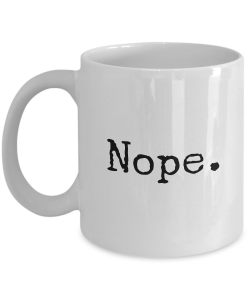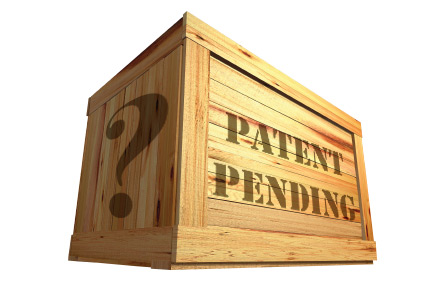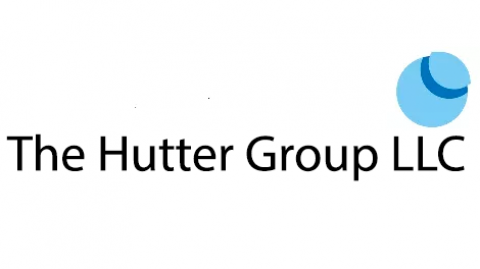 Potential clients frequently ask if they can successfully sell or license their patents; unfortunately, the answer is, far more often than not, “no.” Be it a cultural construct of “inventor exceptionalism,” repeated viewing of late-night infomercials by folks who like to tinker, or lazy journalism that elevates human interest stories about successful inventors over a deep explanation of the realities of generating business success, there exists a belief that “if you build a better mousetrap, the world will beat a path to your door.” The truth is that the only person who is guaranteed to make money from a patent is the patent professional that the client hires to get the work done for them.
This topic is on my mind because I had to, once again, give bad news to someone who was expecting to monetize his patent rights that he believed
Potential clients frequently ask if they can successfully sell or license their patents; unfortunately, the answer is, far more often than not, “no.” Be it a cultural construct of “inventor exceptionalism,” repeated viewing of late-night infomercials by folks who like to tinker, or lazy journalism that elevates human interest stories about successful inventors over a deep explanation of the realities of generating business success, there exists a belief that “if you build a better mousetrap, the world will beat a path to your door.” The truth is that the only person who is guaranteed to make money from a patent is the patent professional that the client hires to get the work done for them.
This topic is on my mind because I had to, once again, give bad news to someone who was expecting to monetize his patent rights that he believed
Why You (Probably) Can’t Sell or License Your Patent
Patent Lawyer Practice Models that Work and Don’t Work for Startups and Small Companies
 Introduction
As someone who works with a wide variety of startups and small companies as the in-house expert interfacing between outside patent lawyers, I have found it helpful to compare and contrast the various legal practice styles encountered, at least because I strive to continuously improve the IP strategy consulting services that I provide my clients. Recently, I have noted that there often appears to be a profound lack of alignment between the desired outcomes that my clients seek from their patent efforts and the business models of many of the lawyers we encounter. These lawyers seek to engage clients like mine, but often they are not able to provide the value we are seeking. Since I have been thinking a lot about this topic lately, I decided to write about my experiences because others may appreciate the context that I can bring
Introduction
As someone who works with a wide variety of startups and small companies as the in-house expert interfacing between outside patent lawyers, I have found it helpful to compare and contrast the various legal practice styles encountered, at least because I strive to continuously improve the IP strategy consulting services that I provide my clients. Recently, I have noted that there often appears to be a profound lack of alignment between the desired outcomes that my clients seek from their patent efforts and the business models of many of the lawyers we encounter. These lawyers seek to engage clients like mine, but often they are not able to provide the value we are seeking. Since I have been thinking a lot about this topic lately, I decided to write about my experiences because others may appreciate the context that I can bring
Enhancing Patent Outcomes: Designing Applications for Allowance
We all know the patent application process can cost $20,000 or more — and often much more. This alone should give those of us who obtain patents reason to pause and consider how we can and should do better relative to generating patent strategies for clients. Some of my peers will say that patent protection has more hurdles to overcome and requirements to meet today than in years past, and this contributes to the high cost. Certainly, this is true, but merely shrugging our shoulders and saying something akin to “I’m doing the best I can under the circumstances” is not a satisfactory option for clients who are relying on patent protection to enhance the value of their businesses. Instead, it is necessary to try something other than status quo patent strategies with a goal of getting better results for our clients.
While I
Startup Patent Licensing: Beating the Long Odds
 Achieving meaningful revenue through licensing by startup entrepreneurs can be for all intents and purposes a “unicorn event:” much discussed, but rarely achieved. Notwithstanding this reality, a significant number of startup entrepreneurs who seek to engage me for IP Strategy and patent development consulting assert confidently that their necessity for a patent is based on a business strategy of licensing (or selling) their protected product or technology to an established company.
This is not surprising because it is embedded in the DNA of much of society that “if you build a better mousetrap, the world will beat a path to your door.” Late night infomercials featuring famous people and entrepreneur “hero stories” in the press also bolster this conviction. It is certainly heartwarming and inspiring to believe that an "Average Josephine" can become rich solely on
Achieving meaningful revenue through licensing by startup entrepreneurs can be for all intents and purposes a “unicorn event:” much discussed, but rarely achieved. Notwithstanding this reality, a significant number of startup entrepreneurs who seek to engage me for IP Strategy and patent development consulting assert confidently that their necessity for a patent is based on a business strategy of licensing (or selling) their protected product or technology to an established company.
This is not surprising because it is embedded in the DNA of much of society that “if you build a better mousetrap, the world will beat a path to your door.” Late night infomercials featuring famous people and entrepreneur “hero stories” in the press also bolster this conviction. It is certainly heartwarming and inspiring to believe that an "Average Josephine" can become rich solely on
Startup Patent Strategy: US Patent Non-Publication

Patenting for the Future: A New Approach for Innovators
The traditional patent model is configured to generate protection for an already completed invention. This, by definition, is a backward-looking approach and begs the question of why people are protecting what they have done in the past, when patents are supposed to be about protecting their future. Because strategy is about defining a desired outcome and working backward, an IP Strategist like me necessarily works with clients to identify why they are seeking patent protection in the first place. Only then do we develop a plan to achieve that business goal.
Experience shows that such forward-thinking strategies help innovators stay one step ahead of competitors by enhancing their ability to protect future revenue streams that are expected to occur with the introduction of innovative new products. When developing new products that customers will pay for in significant volumes, these innovators must “make it cheaper to go through them then around them. To do this requires a
Creating Business Value with Customer-Directed Patent Strategy
When you think about patents, you probably first consider who should be hired to protect ideas from competitors. When I think about patents, I think about what should be protected, and how it can be done efficiently and effectively. Unless you have this nailed down first, it doesn’t matter who you hire to help you, the end product will likely fall short of your goals.
In this regard, I’m more concerned about the client’s innovation story and how patentable concepts will benefit her customers. In short, I believe it is the customers we should focus on protecting, not just the product we are selling to them. While a bit more effort may be needed on the front end with this approach, my experience shows that taking a collaborative (and creative) approach to patenting allows my clients to generate strong protection more quickly, and at
Need Broad Patents Fast? Try This.
 That title got your attention, didn’t it? It was meant to. After another successful round of patent application examinations for several clients in the last year, I thought others would like access to my proven patent acquisition methodology. Certainly, there’s a lot more than I can include in this post, and what is presented here should be considered to be only a high level introduction to my process. Moreover, every client requires focused attention to generate the desired patent protection, and not every business scenario mandates this comprehensive approach. But, for those situations where company leadership determines that strong patent protection is a key to achieving the desired business outcomes from investment in innovative products and technology, this methodology is not only recommended, it is required for success. Put simply, if you do the hard work
That title got your attention, didn’t it? It was meant to. After another successful round of patent application examinations for several clients in the last year, I thought others would like access to my proven patent acquisition methodology. Certainly, there’s a lot more than I can include in this post, and what is presented here should be considered to be only a high level introduction to my process. Moreover, every client requires focused attention to generate the desired patent protection, and not every business scenario mandates this comprehensive approach. But, for those situations where company leadership determines that strong patent protection is a key to achieving the desired business outcomes from investment in innovative products and technology, this methodology is not only recommended, it is required for success. Put simply, if you do the hard work
Value Enhancing Patent Prosecution Strategies: Non-Publication of US Applications
The non-publication procedure for certain US patent applications is one of the most under-utilized tools in the U.S. patent strategy toolkit. After 20+ years of experience as a patent attorney, the non-publication process is one of my go-to strategies for clients who wish to start the process of patenting their innovations without also prematurely disclosing their “secret sauce” to their competitors, as would normally be the case when filing a patent application that will publish in 18 months after filing if the standard application process is selected. In addition to allowing the information in a patent application to remain confidential from prying eyes for a longer time, this can strategy pay dividends as the patent examination process becomes more challenging or if your company pivots. In this regard, if your US patent application does not publish, you may retain the right to add new aspects of your innovation for a longer period of time, while still retaining the filing date
Value Enhancing Patent Strategies: Accelerated US and Foreign Patent Timelines
My many years of experience as an IP Strategist working with countless clients helps me hone keenly my effort to assist clients in utilizing various patent strategies available to them, including how to buck the trend of long patent pendency that can create business uncertainties. In this regard, you probably know the traditional patent acquisition timeline is typically 2.5-4 (or even more) years from US utility application filing to issuance. For clients seeking protection outside the US, the time can be twice as long.
The time for obtaining US and non-US applications can be greatly reduced through use of acceleration techniques made available in recent years. I have obtained dozens of US utility applications for clients using the “Trackone” process. Using this mechanism, these clients have obtained notice of issuance within 1 year. Moreover, I often find the examinations using this process to be more thorough, which often results in a “cleaner” review by the examiner,






